Project 26 and 26 bis cruisers. Part of 6: "Maxim Gorky" against "Belfast"
At the end of the technical part of the description of the 26 and 26-bis cruisers, a few words should be said about the structural protection of the hull against underwater damage. It must be said that light cruisers could never boast an adequate level of protection: the very idea of a high-speed ship of moderate displacement prevents this. A light cruiser is long, but relatively small in width, and its vehicles must be very powerful to provide excellent speed.
At the end of the 20-x - the beginning of the 30-ies, the displacement of light cruisers "grew up" compared with representatives of their class of the First World War, they needed more powerful power plants than before. And if the same British cruisers used to get along with a pair of turbine units that operated on two shafts, now they began to install 4 machines on them that set the 4 propeller in motion. The consequences were not long in coming - even when breaking the engine room into two compartments, each of them still had to install two cars. Of course, there was no room left for any PTZ; in fact, many cruisers only covered a double bottom.
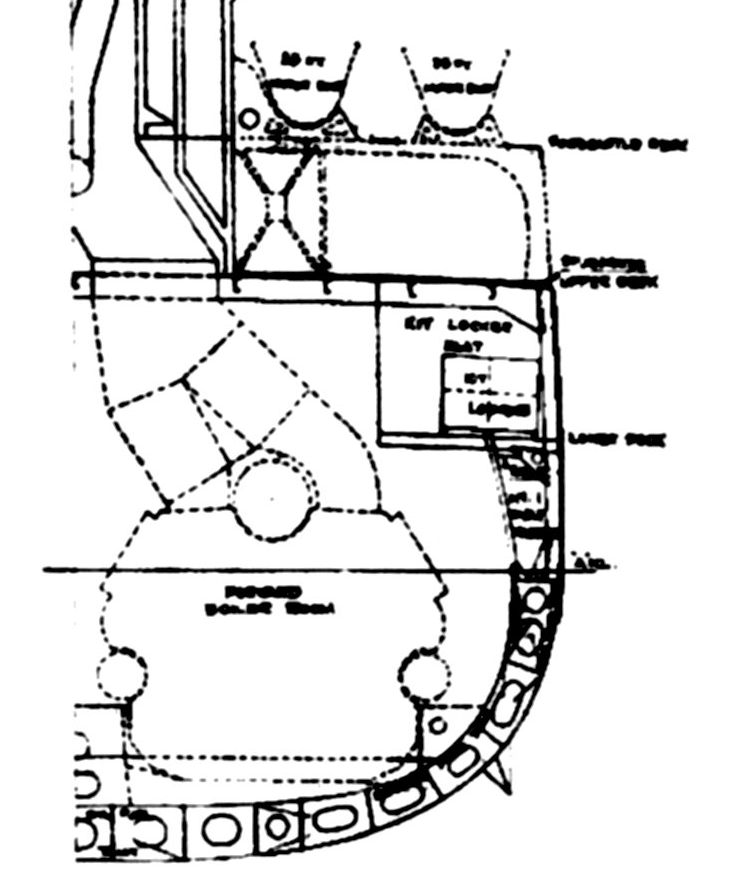
Cross section of the light cruiser "Linder" in the area of engine rooms
The same problem haunted even heavy cruisers.
Cross section of the heavy cruiser "Trieste" in the area of boiler rooms
Of course, there were exceptions to the rule, for example, the famous French heavy cruiser Algeri, whose armor and structural protection is considered exemplary. Suffice it to recall that the depth of the anti-torpedo protection of this cruiser reached 5 meters, not all battleships could boast such protection. But on “Algeri”, a similar result was achieved due to the very low speed for the cruiser (according to the project, only 31 ties), and besides, it should be borne in mind that the French shipbuilding school was distinguished by the unique quality of the theoretical drawings for its ships, no one in the world could argue, and this provided them with the maximum speed with the minimum power of the machines.
The Italians built a lot of four-cruisers, but they initially planned to install two-shaft power plants on their Kondotieri, which required very powerful turbine units. The power plants of the Alberico da Barbiano-type cruisers and the Luigi Cadorna following them didn’t work very well, but the Italians gained the necessary experience, so the turbines and boilers for the next series of Raimondo Montecuccoli and Eugenio di Savoia were not only powerful, but also quite reliable. The need for only two turbine units (and three boilers for each) made it possible to arrange them in a "row", while the distance from the boilers and cars to the sides was large enough to ... what? Like it or not, it is impossible to create a serious PTZ in the dimensions of a light cruiser. All these anti-torpedo (including - armored) bulkheads ... even on the battleship "Yamato" worked through time. To recall at least the PTZ of the battleship Prince of Wells - a very sturdy construction simply drove into the depths of the hull, which is why the compartments it was designed to protect still flooded.
The creators of the project 26 and 26-bis went the other way - designed the cruiser so that in the area of the sides turned out a large number of small-sized compartments. At the same time, the cruiser was divided by length into 19 waterproof compartments, and the watertight bulkheads below the armor deck were made solid, without any doors or necks. Such protection was not, of course, as effective as an American-type PTZ, but it still could significantly limit the sinking of the ship and could probably be considered optimal for a light cruiser.
In addition, the Soviet cruisers received a high-quality and robust hull of a mixed set system, with special strengthening of the places where the longitudinal set was replaced by the transverse one. All this together provided the 26 and 26-bis cruisers with excellent seaworthiness and survivability. The cruiser "Kirov" without any problems kept the 24 node against the wave in the 10-ball storm, the "Petropavlovsk" (formerly "Lazar Kaganovich") passed a typhoon in the Sea of Okhotsk.
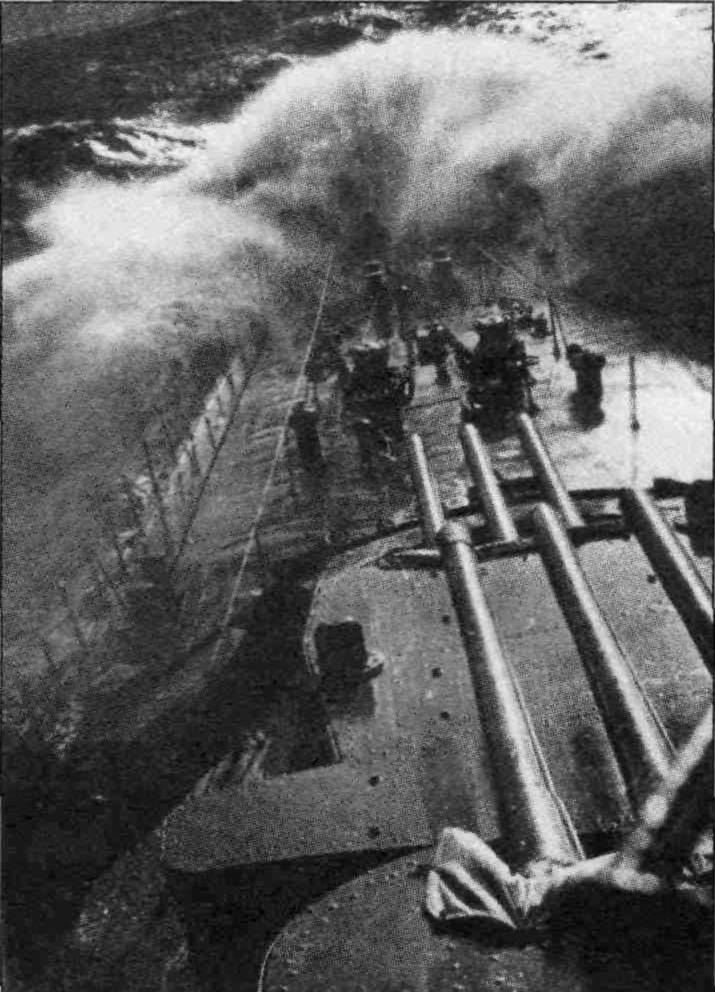
The same typhoon
The cruisers lost their nose ("Maxim Gorky") and the stern ("Molotov") but, nevertheless, returned to the bases. Of course, similar situations occurred with the ships of other countries (for example, the heavy cruiser "New Orleans"), but this indicates, at least, that our ships were no worse. And, of course, the most impressive demonstration of the survivability of domestic cruisers was the detonation of the “Kirov” on the German TMC ground mine, when an explosive in the amount equivalent to 910 kg of trotyl was detonated under the nose of a Soviet ship.
That day - October 17 1945 g "Kirov" received a terrible blow, even more dangerous, because the cruiser was not staffed by crew. Moreover, the shortage concerned both the officers - there were no senior officer, commanders of warheads-5, movement division, boiler electrical and turbo-engine groups, and junior command personnel and sailors (the same warhead-5 was equipped with 41,5%). Nevertheless, the cruiser managed to survive - despite the fact that 9 of adjacent compartments was flooded, although according to initial calculations, flooding was provided only with the flooding of three.
In general, it can be stated that the seaworthiness and survivability of the Kirov and Maxim Gorky-type cruisers was quite at the level of the best foreign ships of the corresponding displacement.
So, what we got in the end? Soviet cruisers of the 26 and 26 bis projects turned out to be strong, fast, well protected from the impact of 152-mm projectiles (although this probably applies only to 26-bis cruisers). They were equipped with a completely adequate main caliber, superior in power to the 152-mm artillery of light cruisers, but somewhat inferior to the 203-mm guns of their heavy counterparts. The 26 and 26-bis ship fire control instruments were very sophisticated and among the best cruisers in the world. The only truly serious drawback of the Soviet ships is their anti-aircraft artillery, and not so much in the part of the CCP (everything was normal there), but as the artillery systems themselves.
Let's try to compare the domestic Maxim Gorky type cruisers with their foreign peers. What was happening in stories world cruising in the period when the ships of the project 26-bis were built in the USSR?
As you know, for a long time, the development of cruisers was limited to various maritime agreements, which left their mark on the shipbuilding programs of all the leading fleets of the world. The Washington Maritime Agreement has led countries to rush to create 203-mm ten-thousands, although many powers have not thought about such large and powerful cruisers before. But at the same time, the construction of light cruisers continued, and they obviously differed from their heavy counterparts: in addition to lighter guns (152-155 mm), light cruisers also had a much smaller displacement (within 5-8 thousand tons).
All this harmony of the cruiser classification overnight was destroyed by the Japanese - they, you see, really wanted to build heavy cruisers under the guise of light, so the 1934 G series laid ships of the Mogami type, allegedly in 8 500 t standard displacement and with 15 * 152- mm guns.
Cruiser "Mogami", 1935 g
If it were not for the contractual restrictions on the tonnage of heavy cruisers, such monsters would never have seen the light - the Japanese, without further ado, would simply have laid down another series of heavy cruisers. In fact, they did just that because the Mogami was a heavy cruiser, to which temporarily installed three-gun 152-mm turrets instead of two-gun eight-inch ones.
And if the rest of the countries were free to choose the answer, then with the highest degree of probability they would oppose the usual heavy cruisers to the Japanese. But the problem was that countries had already chosen their limits for such ships and could only build light cruisers. However, to create ships armed with 8-9 six-inch guns against the fifteen-gun Mogami did not seem to be a wise decision, and therefore the British planted Southampton with 12, and the Americans launched Brooklyn with 15 152-mm guns. All this, of course, was not a natural development of the light cruiser, but only the reaction of the USA and England to the Japanese trick, but it led to the fact that, starting in 1934, the fleets of England and the USA replenished the cruisers, which were very close in size to heavy, but having only 152 mm artillery. Therefore, we will compare the domestic project 26 bis cruisers with the generation of “multi-gun” light cruisers: the British “taunas” and “Fiji”, the American “Brooklyn”, the Japanese “Mogami” in its 155-mm hypostasis. And from the heavy cruisers we take the same Mogami, but already with 203 mm guns, the Italian Zara, the French Algeri, the German Admiral Hipper and the American Wichita. We emphasize that ships are subject to comparison at the time of their transfer the fleet, and not after any subsequent upgrades, and that the comparison is subject to equal training of crews - i.e. the human factor is excluded from comparison.
"Maxim Gorky" against the British
Surprisingly, but the fact is that in the entire Royal Navy there was no cruiser that would have a tangible superiority over the cruiser of the 26-bis project due to its tactical and technical characteristics. The British heavy cruisers were truly “cardboard”: having “armored belts” as much as an inch thick and equally “powerful” traverses, towers and barbets, all these “Kents” and “Norflokle” were vulnerable even to 120-130-mm destroyer artillery , and the 37-mm deck didn’t protect very well against 152-mm projectiles, let alone more. The only more or less decent booking - 111 mm armor plates covering the cellars, could not drastically improve the situation. Of course, neither the 70-mm board nor the 50 mm deck of the Soviet cruisers also provided reliable protection against the semi-armored British 203-mm shells, but the victory in a hypothetical fight between Maxim Gorky and, for example, Norfolk would be determined by Mrs. Fortuna - whose projectile first falls into something important, he won. At the same time, the Soviet cruiser still had the advantages of choosing the distance of the battle (it was faster than the 31-node British TKR), and its armor, albeit insufficient, still provided somewhat better fighting stability to the Soviet ship, because it’s better to have at least some protection, than not to have any. The last British heavy cruisers had somewhat better reservations, but poor protection of the decks (37 mm), towers and barbets (25 mm) did not help against the Maxim Gorky shells, while 6 * 203-mm Exeter and York "At best, equivalent to 9 Soviet 180-mm guns. On light cruisers like "Linder" and say nothing.
But on the "Town" type cruisers, the British seriously strengthened the defense. In total, the British built three series of such ships - type "Southampton" (5 ships), type "Manchester" (3 ship) and "Belfast" (2 ship), and the booking increased with each series, and the last "Belfast" and "Edinburgh" are considered the best light cruisers in the UK and the most protected cruiser ships of the Royal Navy.
Light cruiser "Belfast", 1939 g
Already the first "Towns" - Southampton-type cruisers, received an impressive 114 mm citadel, stretching to 98,45 m (from "Maxim Gorky - 121 m), and covering not only the boiler and engine rooms, but also the cellar of anti-aircraft guns and the central post: however, the traverse armor was only 63 mm. The 152-mm cellars had all the same “boxed” scheme - 114 mm from the sides, 63 mm in the stern and the bow, and on top of the citadel and cellar covered 32 mm of armored deck. The towers were still “cardboard”, their forehead, walls and roof were protected only with 25,4 mm armor, but the situation with the barbets improved slightly - they were used for differential booking, now they had 51 mm armor from the side of the barbet, but in the stern and bow - all the same 25,4 mm. The conning tower was defended ... as many as 9,5 mm sheets - even such a splinterproof such a “reservation” to call the language would not turn. Perhaps these “armor players” could have saved the attacking dive bomber from machine guns ... maybe not. In the second series (type “Manchester”), the British tried to fix the most glaring gaps in protection - the towers received a front plate in 102 mm, and the roofs and walls - 51 mm. The armored deck was also reinforced, but only above the cellars, where its thickness had grown from 32 mm to 51 mm.
But Belfast and Edinburgh received the greatest increase in protection - their 114-mm armor-belt now covered the cellars of the main-caliber towers, which made it unnecessary to have their box-type protection. The thickness of the deck was finally increased to 51 mm above the engine and boiler rooms and even to 76 mm above the cellars. The booking of barbets was again strengthened - now their thickness along the sides of the deck was 102 mm, and on the bow and stern - 51 mm. And if Maxim Gorky, obviously, was superior to Southampton in reservations and was approximately equal (or slightly inferior) to Manchester, then Belfast had an undoubted advantage in terms of booking.
Good booking from the British was supplemented by a very perfect material part of the artillery of the main caliber. A dozen 152-mm guns were placed in four three-gun turrets, with each gun placed in an individual cradle and, of course, with separate vertical guidance. The British went to unprecedented measures to reduce dispersion in the salvo - not only did they bring the distance between the axes of the barrels to 198 cm (for the much more powerful 203-mm guns of the Admiral Hipper had 216 cm), they also shifted the central gun to 76 mm deep into the turret, in order to reduce the influence of powder gases on the shells of neighboring guns!
What is interesting - the British themselves noted that even such radical measures did not eradicate the problem completely. However, the British Mk.XXIII gun, capable of firing 50,8 kg with a semi-armored projectile with an initial speed of 841 m / s, was one of the most formidable six-inch guns in the world. Its semi-projectile projectile (the British did not have any purely armor-piercing 152-203-mm projectiles) contained 1,7 kg of explosives, i.e. almost as much as the armor-piercing shell of the domestic 180-mm cannon, high-explosive - 3,6 kg. With an initial speed of 841 m / s, the firing range of the 50,8 kg projectile should have been 125 kb. At the same time, each British gun was supplied with its own feeder, while the Belfast cruisers supplied 6 shots (projectile and charge) per minute to the gun, although the practical rate of fire was slightly higher and amounted to 6-8 shots / min to the gun.
However, this is a good news "For the British" end.
In many works (and countless online battles) devoted to the artillery of the main caliber of the 26 and 26-bis cruisers, it is indicated that, although the weight of the 180-mm projectile exceeds that of the 152-mm, but six-inch guns have a much higher rate of fire, so, and fire performance. It is usually considered so - take data on the rate of fire of the B-1-P at the very minimum (2 rds / min, although, in the author's opinion, it would be more correct to assume no less than 3 rds / min) and consider the weight of the salvo fired per minute: 2 rd / min * 9 guns * 97,5 kg projectile weight = 1755 kg / min., while in the same British Belfast 6 shots / min * 12 guns * 50,8 kg = 3657,6 kg / min or 2,08 times more, than the cruisers like "Kirov" or "Maxim Gorky"! Well, let's see how such arithmetic will work in the event of a confrontation between the Belfast and the cruiser of the 26-bis project.
The first thing that immediately catches the eye - in many sources devoted to English cruisers, the most interesting moment is not mentioned - it turns out that the British six-inch towers in three-armored towers had a fixed loading angle. More precisely, not quite fixed - they could be charged at the angle of vertical pickup of guns from -5 to + 12,5 hail, but the most preferred was the 5-7 hail range. What follows from this? If we take the firing rate of the Admiral Hipper's guns, which also had a fixed loading angle (3 hail), then due to the lowering time of the barrel to the loading angle and giving the desired elevation angle after loading, the firing rate at angles close to direct aiming was in 1,6 times higher than at extreme elevation angles. Those. the German cruiser could shoot with a rate of fire at 4 rds / min to the barrel, but only 2,5 rds / min at maximum ranges. Something similar is true for English cruisers, whose rate of fire should drop with increasing distance, but usually 6-8 rds / min is given without indicating at which elevation angle this rate of fire was achieved. At the same time, guided by the ratio of 1,6, we get that even for 8 rds / min at direct fire, the rate of fire at the maximum elevation angle will be no more than 5 rds / min. But, okay, let's say that 6-8 rds / min - this is the firing rate of tower installations "town" at maximum / minimum elevation angles, respectively, taking into account the rate of ammunition, the cruiser can make 6 rpm / min guaranteed from each of its guns. However, it should be remembered that “shoot” and “hit” are fundamentally different concepts, and if Belfast has a theoretical opportunity to fire volleys every 10 seconds, is it able to develop such a pace in battle?
Practice has shown that this is impossible. For example, in the “New Year's battle”, shooting at full 85 KBT at a distance, the British “Sheffield” (“Southampton” type) and “Jamaica” (“Fiji” type, which also had four three-gun towers with six-inch guns), fired at (i.e., developing a maximum rate of fire, firing to kill), firing one volley a little faster than in 20 seconds, which corresponds only to 3-3,5 rds / min. But why?
One of the biggest problems of naval artillery is pitching a ship. After all, the ship, and hence any artillery gun on it is in constant motion, which is completely impossible to ignore. For example, the error of vertical pickup at 1 degrees when firing domestic 180-mm guns at a distance of about 70 kbt gives a deviation in range by almost 8 kbt, i.e. almost half a kilometer! In the pre-war years, some technically advanced countries tried to stabilize medium-caliber anti-aircraft guns (such as the Germans with their very sophisticated 105-mm anti-aircraft guns). But in those years, stabilization did not work too well, the delay in reaction was commonplace even on relatively light anti-aircraft artillery: and no one even thought about trying to stabilize the heavy towers of the main caliber of cruisers and battleships. But how then did they shoot them? And it is very simple - according to the principle: "If the mountain does not go to Mohammed, then Mohammed goes to the mountain."
No matter how the ship rolls, the moment when the ship is on an even keel is sure to happen. Therefore, for shooting they used special gyros-inclinometers, which captured the moment of “even keel” and only then closed the firing circuits. Shooting took place like this: the main artilleryman, using a submachine gun, set the correct angles of horizontal and vertical guidance, as soon as the guns were loaded and aimed at the target, the commanders in the towers pressed the button of readiness for firing, which caused the corresponding light on the console. The ship's chief artilleryman, as the guns assigned to them showed their readiness, pressed the salvo! Button, and ... nothing happened. The inclinometer gyroscope “waited” when the ship was on an even keel, and only after that the volley followed.
And now we take into account that the period of rolling (ie the time during which the ship (ship) when swinging from one extreme position goes into the opposite position and returns to its original position) for light cruisers is, on average, 10-12 seconds . Accordingly, the ship turns with zero roll on board every 5-6 seconds.
The practical rate of fire of Belfast guns is 6 rds / min, but the fact is that this is the rate of fire of one tower installation, but not the entire ship. Those. if the commanders of each individual tower accurately know the angles at each instant of time, shoot as soon as they are aimed, then the tower can really do 6 rpm from each gun. The only problem is that in life this never happens. The main gunner introduces adjustments to the machine gun, and his calculations may be delayed. In addition, a volley is made on readiness of all four towers, enough failure in one of them - the rest will have to wait. And finally, even if all the 4 turrets were made for firing right on time, a little time would be needed for the chief gunner’s reaction, because if you shoot yourself at gunfire you should be shot, then when centralized, only the gun button is ready for battle, and you need more to glavart, making sure that all the guns are ready, pressed his button. All this spends precious seconds, but what does it lead to?
For example, with centralized shooting, a penalty of 1 per second occurs and Belfast can fire at every 10, but every 11 seconds when rolling with a period of 10 seconds. Here the ship makes a volley - at this moment it has no roll on board. Through 5, the ship again has no lurch on board, but it cannot yet shoot - the guns are not ready yet. After another 5 sec (and 10 sec from the beginning of the shooting), he will miss the “roll = 0” position again, and only after one second he will be ready to fire again - but now he will have to wait another 4 seconds until the roll on board again becomes equal to zero Thus, not 11 will pass between the volleys, but all 15 seconds, and then everything will be repeated in the same order. This is how 11 seconds of “practical centralized rate of fire” (5,5 rds / min) smoothly turn into 15 seconds (4 rds / min), but in reality everything is much worse. Yes, the ship really takes the position “roll on board = 0” every 5-6 seconds, but after all, besides rolling, there is also a keel one, and the fact that the ship does not roll on board does not mean that it is this moment has no roll on the bow or stern, and in this case it is also impossible to shoot - the shells will go away from the target.
Taking into account all the above, we understand why the real combat rate of fire of the 152-mm guns was much lower than practical.
Of course, all of the above will affect the rate of fire of the heavier guns of the Maxim Gorky. But the fact is that the lower the rate of fire of a weapon, the less it will reduce pitching. If the pitching allows the ship to fire every 5 seconds, then the maximum delay of the volley will be 5 seconds. For a ship with a 6 shot rate / min rate of fire, a five-second delay will reduce it to 4 shots / min, i.e. in 1,5 times, and for a ship with a rate of 3 shots / min - up to 2,4 shots / min or 1,25 times.
But another thing is interesting. The maximum rate of fire - certainly an important indicator, but there is in fact such a thing as the speed of fire. After all, until they shoot at the enemy, it makes no sense to open a quick fire, unless it is about shooting at close range. But first - a couple of words about the English fire control system.
Belfast has two KDPs against one at Maxim Gorky, but each KDP of the English cruiser had only one range finder, and not a single source indicates the presence of a scartometer. This means that the KDP of a British ship can measure one thing - or the distance to an enemy ship, or to its own volleys, but not both at the same time, as the cruiser of the 26-bis project, which has three rangefinders in the KDP, could do. Accordingly, for the Englishman, only zeroing was possible according to observations of the signs of falling, i.e. The most archaic and slowest method of zeroing at the beginning of the Second World War. Given the fact that the six-inch shells had a significant variation at large distances, the adjustment was made only full volleys. It looked like this:
1) The cruiser fires a 12-gun volley and waits for the shells to fall;
2) According to the results of the fall, the chief artilleryman gives corrections to the sight;
3) The cruiser fires the next 12-gun volley at the corrected sight, and then everything repeats.
And now - attention. The British 75-mm shells fly 152 seconds to the 29,4 kbt. Those. after each volley the English chief must wait almost half a minute, then he will see a fall. Then he still has to determine the deviations, make adjustments to the machine gun, the gunners have to tighten the sight, and only after that (again, when the ship gets on an even keel) the next volley will follow. How long will it take to adjust the sight? 5 seconds? 10? Author is unknown. But it is known that the 180-mm projectile of the Maxim Gorky cruiser overcomes the same 75 kb in just 20,2 seconds, and here it turns out quite interesting.
Even if it is assumed that 5-10 seconds are needed to correct the sight after the shells fall, the English cruiser can fire every 35-40 seconds, because the time between shots for it is counted as the time of the projectile flight + time to adjust the sight and prepare for the shot . A Soviet cruiser, it turns out, can fire every 25-30 seconds, because its projectiles fly to the target of 20 seconds, and another 5-10 seconds is needed to correct the sight. Those. even if it is assumed that the practical rate of fire of the Maxim Gorky's guns is only 2 rds / min, then even then he will fire at volleys once every 30 sec, i.e. BETTER THE FIRST SIX-INSIDE British Cruiser!
But in fact, for the English ship is still worse - the Soviet cruiser can use such advanced methods of shooting as the "ledge" or "double ledge", giving two volleys (four and five-gun) or even three salvo (three-gun), without waiting for the previous volleys. Therefore, at a distance in 75 KBT (for the times of the Second World War - the distance of a decisive battle) and with equal preparation, one should expect that the Soviet cruiser will shoot much faster than English, while Belfast will spend far more shells than the Soviet cruiser.
The flaws in the organization of the shooting of the British six-inch cruisers "brilliantly" proved themselves during the fighting - to achieve a relatively small number of hits at large distances, the British had to spend an incredible amount of shells. For example, while leading a “New Year fight” with “Hipper” and “Lutzov”, the British shot about a thousand shells at these ships - 511 launched Sheffield, there is no data for “Jamaica”, but presumably about the same amount. However, the British achieved only three hits in the "Admiral Hipper", or some 0,3% of the total number of shots. An even more amazing battle took place on 28 on June 1940 G, when five British cruisers (including two “towns”) managed to go undetected on 85 KBT to three Italian destroyers. They were carrying some cargo, their decks were so overwhelmed that two destroyers could not use their torpedo tubes. The third destroyer, Espero, tried to cover up their own ... Two British cruisers shot at 18.33, 18.59 was joined by the other three, but the first hit was reached only at 19.20 at Espero, which caused him to lose speed. The Sydney was assigned to finish off the destroyer, four other cruisers continued to pursue the Italians. "Sydney" was able to sink the "Espero" only to 20.40, the rest of the cruisers stopped pursuing shortly after the 20.00, so the remaining two Italian destroyers escaped with a slight fright. The number of hits in the destroyers is unknown, but the British managed to shoot almost 5 000 (FIVE THOUSANDS) shells. Compare this with the shooting of the same “Prince Eugen”, which in a battle in the Danish Strait at 70-100 kbt released 157 203-mm projectiles and achieved 5 hits (3,18%)
So, by virtue of the foregoing, there is no reason to assume that in a duel against Belfast at a distance in 70-80 kbt, the Soviet cruiser would receive a significantly larger number of hits than he himself would inflict. But in a sea battle, it is important not only the quantity but also the quality of the hits, and in this parameter 50,8 kg of semi-armor of the British cruiser is much weaker than 97,5 kg of Maxim Gorky shells. At a distance of 75 KBT, the British 50,8 kg projectile will fall into vertical armor at a speed of 335 m / s, while the Soviet 97,5 kg will be reinforced combat (with an initial speed of 920 m / s) and 513 m / s, and combat (800 m / s s) - 448 m / s. The kinetic energy of the Soviet projectile will be 3,5-4,5 times higher! But the point is not only in it - the angle of incidence of an 180-mm projectile is 10,4 - 14,2 hail, while in English - 23,4 hail. The British six-inch, not only loses in the energy sector, but also falls at a less favorable angle.
Calculations of armor penetration (made by the author of this article) using Jacob-de-Mar’s formulas (recommended by A. Goncharov, “Naval tactics course. Artillery and armor” 1932 g) shows that the British projectile can penetrate only 61 mm of uncemented steel plate under such conditions, while the Soviet projectile (even with an initial speed of 800 m / s) is 167 mm cemented armor. These calculations are consistent with the data on armor penetration of Italian shells (cited earlier) and the German calculations of armor penetration of 203-mm guns of Admiral Hipper-type cruisers, according to which her projectile 122 kg projectile with an initial speed of 925 m / s. punched 200 mm armor plate at a distance of 84 KB. It must be said that the ballistics of the German SK C / 34 differs little from the Soviet B-1-P.
Thus, at a distance of a decisive battle, Belfast will not have a significant superiority in the number of hits, while the 70 mm stronghold of Maxim Gorky is sufficient protection against English projectiles, while the British 114 mm armor belt for Soviet guns is quite vulnerable. At great distances, the “British” has no chance at all to inflict any significant damage on Maxim Gorky, while the 97,5 kg shells of the latter, falling at a large angle, are likely to be able to overcome the Belfast’s 51 mm. The only place where the English cruiser can hope for success is the very short distances in 30, perhaps 40 KBT, where his semi-armor shells can penetrate the Soviet cruiser’s 70 mm vertical armor and, due to the higher rate of fire, he may be able to get the upper hand. But another thing should also be taken into account - in order to penetrate the Maxim Gorky’s defense, Belfast will have to shoot semi-armored projectiles containing only 1,7 kg of explosives, while the Soviet cruiser can use its semi-armored ones, which are capable of penetrating the English citadel at such a short distance, but they carry as much as 7 kg of explosives. So, in the short run, the victory of the British cruiser is not unconditional.
Of course, anything happens. For example, in the same “New Year's Fight” 152-mm British projectile hit the “Admiral Hipper” at the time when he made a U-turn and tilted, as a result of which the English “hotelie” hit the bronepoyas, led to the flooding of the boiler room and stopping turbines, why the speed of the German cruiser fell to 23 nodes. But, except for lucky accidents, it should be recognized that the Maxim Gorky-class cruiser was superior in its fighting qualities to the best English cruiser, Belfast. And not only in combat ...
Surprisingly, the Soviet ship had, perhaps, even better seaworthiness than the English: the height of the Maxim Gorky freeboard was 13,38 m against 9,32 m at Belfast. The same in terms of speed - on tests "Belfast" and "Edinburgh" developed 32,73-32,98 knots, but they showed this speed in the displacement corresponding to the standard, and under normal and, all the more, full load, their speed would, of course, be less . Soviet cruisers of the 26-bis project went to the measuring line not in the standard, but in the normal displacement, and developed 36,1-36,3 ties.
At the same time, the Belfast-type cruisers turned out to be significantly heavier than the Maxim Gorky - the standard displacement of the British reached the 10 550 t against the 8 177 t of the Soviet ship. The stability of the British was also not at the level - it came to the point that during the subsequent upgrades we had to add a meter of width! The cost of the English cruisers just went through the roof - they cost the Crown over 2,14 million f.st., i.e. even more expensive than heavy cruisers like "County" (1,97 million f.st.). However, "Kent" or "Norfolk" could fight on equal terms with "Maxim Gorky" (truly, it would have been a battle of "an egg-shell armed with hammers"), but this cannot be said about Belfast.
To be continued!
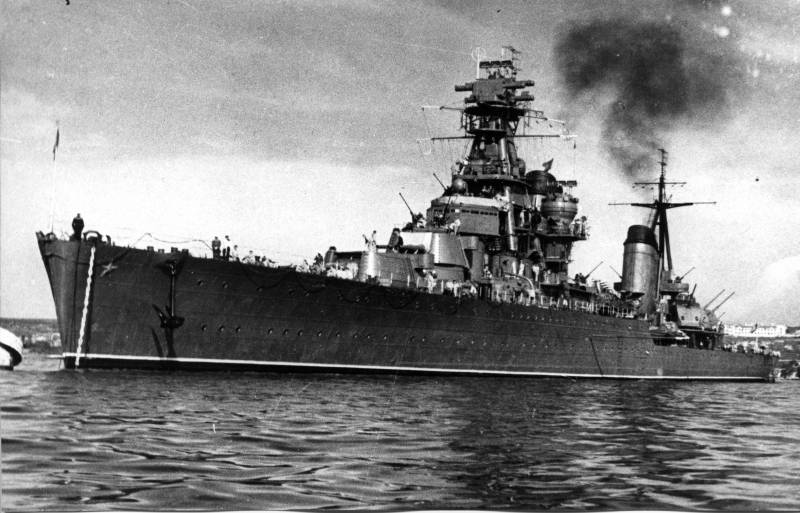
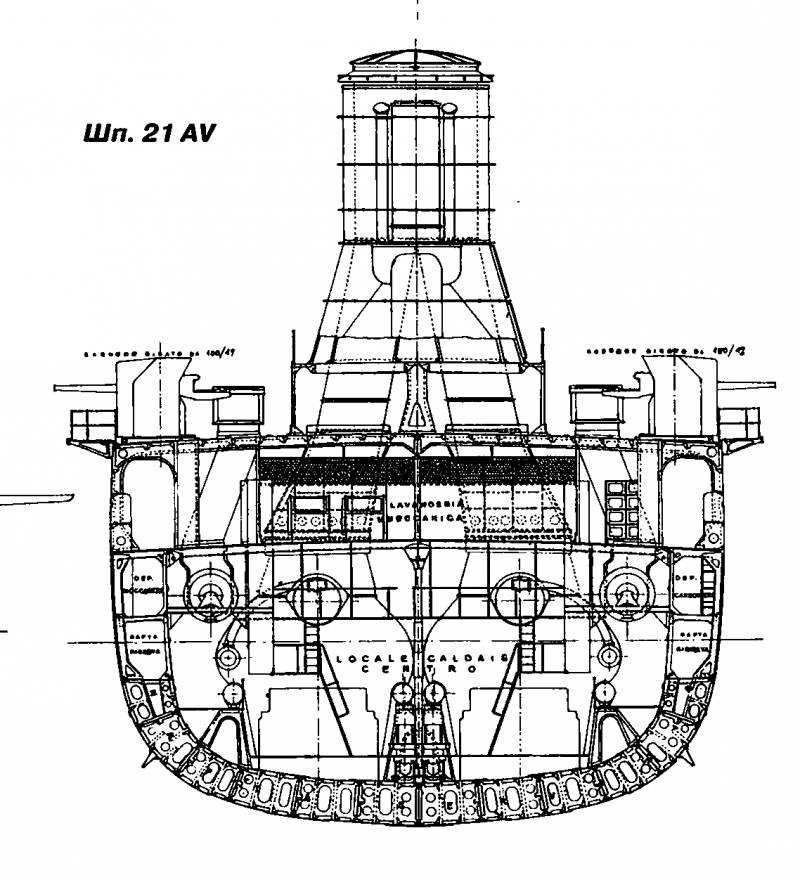
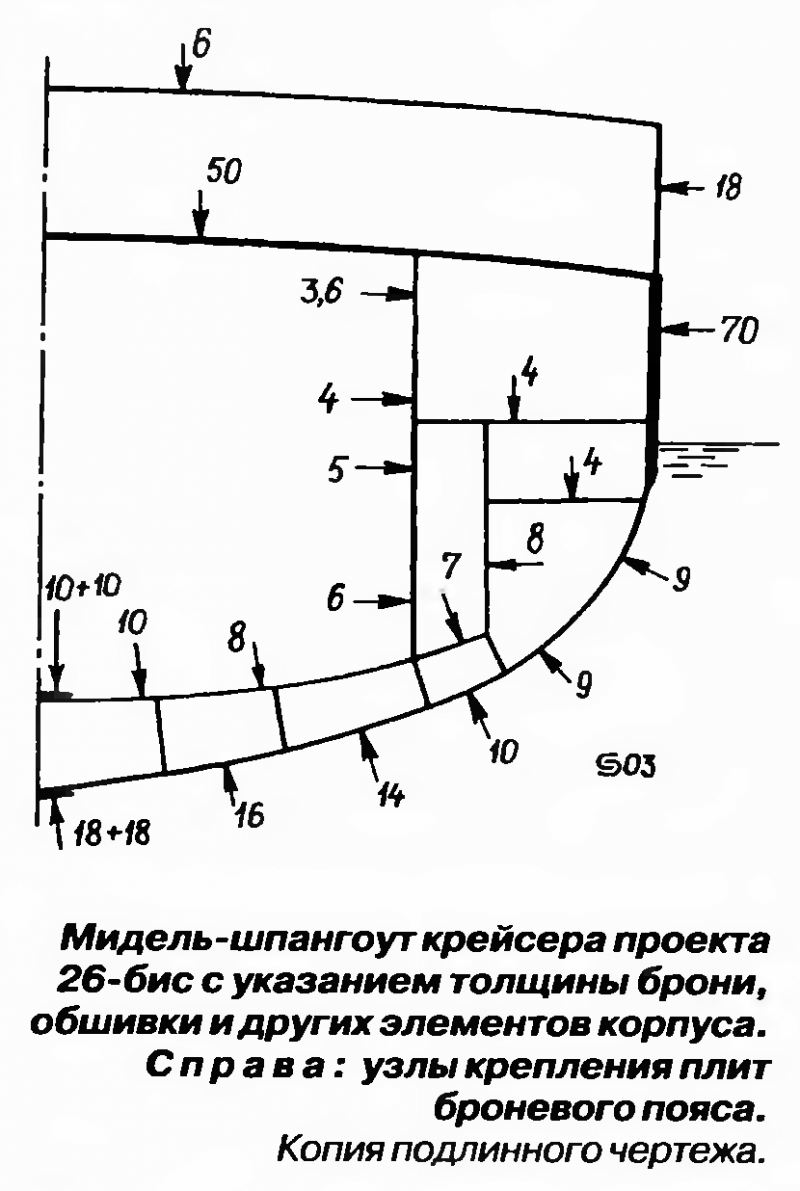

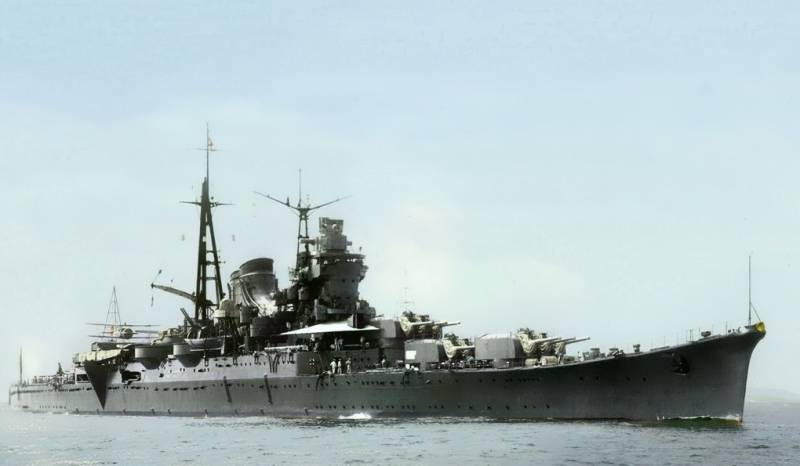
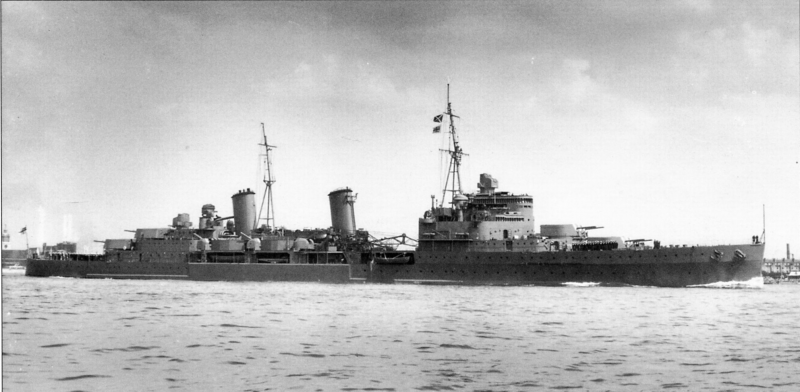
Information